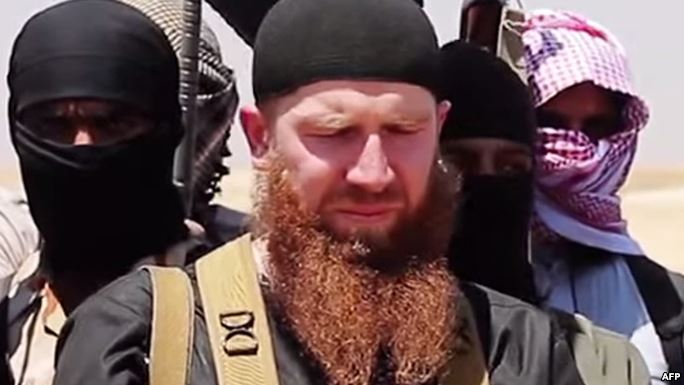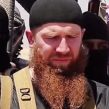
Allure of Islamic State’s Media Machine Attracts New Generation of Chechen Recruits
Publication: Eurasia Daily Monitor Volume: 12 Issue: 72
By:

Emotions ran high in the Chechen community once again with the news that two school children from Pankisi, Georgia, went to Syria to fight, presumably alongside the Islamic State organization (see EDM, April 16). Earlier in April, 16-year-old Muslim Kushtanashvili and 18-year-old Ramzan Bagakashvili went to Syria from the Pankisi Gorge (Ekhokavkaza.mobi, April 9). One of them was in the 10th grade and the other in the 11th grade. Because the young men had run away from home, the residents of Pankisi for the first time condemned militant recruiters for the war in Syria. The responsibility of the Georgian authorities’ in the incident is also unclear, given that it is not known how the minors managed to go through airport controls in Tbilisi to leave for Turkey (Ekhokavkaza.mobi, April 6). Neither the Pankisi Council of Elders nor the authorities in Chechnya, nor the authoritative leaders in the Chechen diaspora in Europe have been able to order or persuade young people to abandon what these youth regard as their sacred duty. This is a problem not only for Chechnya and Chechens: indeed, many young people throughout the world are infected with this virus (Lenta.ru, September 26, 2014).
The involvement of Chechens in the Middle Eastern conflict is often in the spotlight because Chechens are represented by influential commanders in this conflict. Amir Muslim, amir Salahudin, amir Umar Shishani, amir Abu-Musa, amir Al-Bara, amir Ibrahim Shishani, amir Abu-Turan Shishani, amir Khairullah Shishani and a dozen of other Chechen amirs are active in the regional war. Umar Shishani (Tarkhan Batirashvili) is the most respected figure among the Chechens of Pankisi. Only amir Salahudin Shishani (Feizulla Margoshvili) can rival Umar Shishani’s popularity in Pankisi and Chechnya. Amir Muslim Shishani (Murad Margoshvili) has the greatest regard among the Chechen diaspora in Germany, but not in Pankisi or in Chechnya.
It is difficult to assess the losses among Pankisi Chechens because not all the relatives of the militants know for certain if their sons fighting in Syria are alive or not. In any case, the number exceeds ten persons (Vz.ru, April 13). The ages of those who died in Syria are quite telling, as they ranged from 18 to 26 (Lenta.ru, April 14).
It must also be noted that not only Chechens, but also representatives of the other Muslim communities of Georgia, such as the Azerbaijanis and the Adjarians, are fighting in the Middle East, although there are only about a dozen of them. According to Georgian analyst Gia Nodia, the influence of the militants fighting in the Middle East will spread to Georgia’s Adjara region quite soon, against the backdrop of Christian Georgian intolerance of Muslim Georgians in Adjara (Ekhokavkaza.com, April 15).
Chechen commanders fighting in Syria have become a kind of symbol of the revival of a Chechen military elite capable of striking Russia. The majority of Chechens in Chechnya and beyond did not approve of the Chechen militants’ views and actions in Syria; however, they were happy about their military victories. Many Chechens regard the generation of new fighters in Syria as a replacement for the previous generation of fighters who fought and were killed in Chechnya in the wars with Russia in the 1990s and at the dawn of the 20th century. An estimated 100–200 persons have left for Syria from Pankisi alone. The estimates diverge so widely because, according to the residents of the area, no more than a 100 traveled directly from the gorge to the Middle East. Some émigrés from Pankisi in Europe have also joined war in the Middle East and there are probably about the same number of them as those who went to Syria from Georgia (Meduza.io, November 24, 2014).
It also should be noted that Pankisi Chechens comprise no more than 2–3 percent of the total number of Chechens who went to Syria from Chechnya, Russia and Europe. The Federal Security Service (FSB) estimates that 1,700 militants from Russia have joined the Middle Eastern insurgency, but that figure does not seem at all plausible (Interfax, April 10). A militant from the Chechen Ash-Shishani brigade, which is part of the so-called Islamic State, provided a figure three times larger than the official one. According to the militant, North Caucasians alone comprise a force of 5,000 fighters in the Islamic State organization (Okolokremlya.ru, April 14). This figure should not be taken for granted, since the Islamic State militant has an incentive to give the impression that the group is large and has great ideas. However, this number may be quite close to the reality, given that 3,000 Chechens may be fighting in Syria alone (YouTube, February 20).
Those who are against Islamic State cannot lead a persuasive campaign to win over youth. Moreover, the media often wrongfully label those fighting in the ranks of the Islamic State as mercenaries. They are not mercenaries and join the group voluntarily, not for money. The majority of the recruits go to the Middle Eastern war to die, and that is the tragedy. Neither the elders of the Chechen diaspora in Europe, nor the authorities in Chechnya, nor the Chechens in Pankisi can counter the powerful propaganda campaign that was launched by the Islamic State on the Internet. This means that in the next 1–2 years, Chechen youth will continue to join the group because of the impact of IS propaganda. Young Chechens who were born during a time of war and brought up in a wartime environment are most vulnerable to the ideology of the Islamic State.




